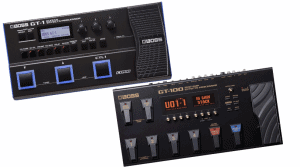Fender CD-60S Vs Yamaha FG800 – Which One Is Better & Why?
In this post we are doing a comparison of between the Fender CD-60S vs Yamaha FG800. We look at the design, sound quality and of course price to determine which could be the right choice for you.
The Fender CD-60S or Yamaha FG800 are two of the most popular and by extension the best of acoustic guitars on the market today.
If you are looking for a new guitar for yourself or gifting someone, understanding the difference between these two will be the difference between a thankful smile and a hug and a loud squeal accompanied by ‘how did you know that I’ve been dreaming about this exact guitar?’
And even if you are only getting it for yourself, knowing that makes these guitars tick will make a huge difference in how you play and how the music feels. So let’s get started and put the Fender CD-60S vs Yamaha FG800 head to head.
But before we look at how these two guitars compare, it’s worth noting that either the Fender CD-60S or the Yamaha FG800 might be great acoustic guitars, but they have several differences which should guide you when buying either of the two.
Please Note I May Receive Commission For Any Purchases You Make Through Links On This Page!
Table of Contents
Fender CD-60S Vs Yamaha FG800
Fender CD-60S Overview
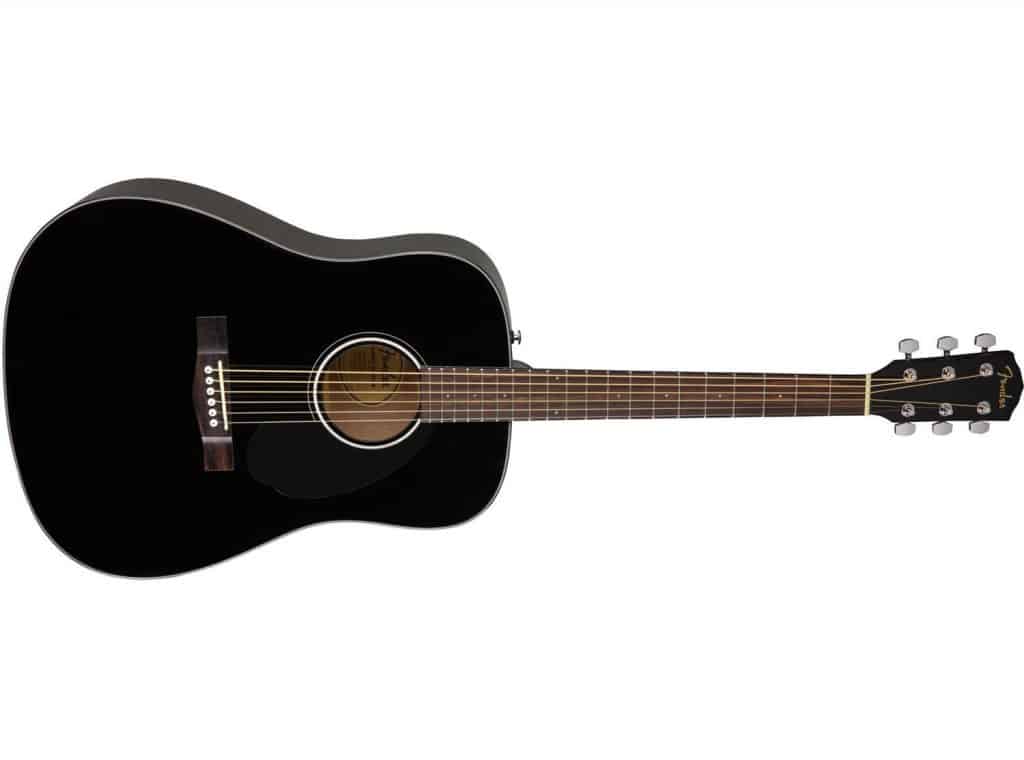
Fender is the most iconic American guitar brand, and it simply is a brand that is regarded as the master of guitars, which is why just about everyone getting started on their guitar journey will set off with a Fender.
Fender has some of the best acoustic guitars for beginners; and with this Fender CD-60S (Check Price SP) as one of the brand’s Classic Design series, this guitar is an excellent option for any acoustic guitar beginner thanks to its ease of playability.
Not to mention the fact that this guitar gives you a large room to grow. You might also like this acoustic guitar because it’s a Dreadnought guitar that comes with everything you need to start and master your guitar playing journey.
Yamaha FG800 Overview
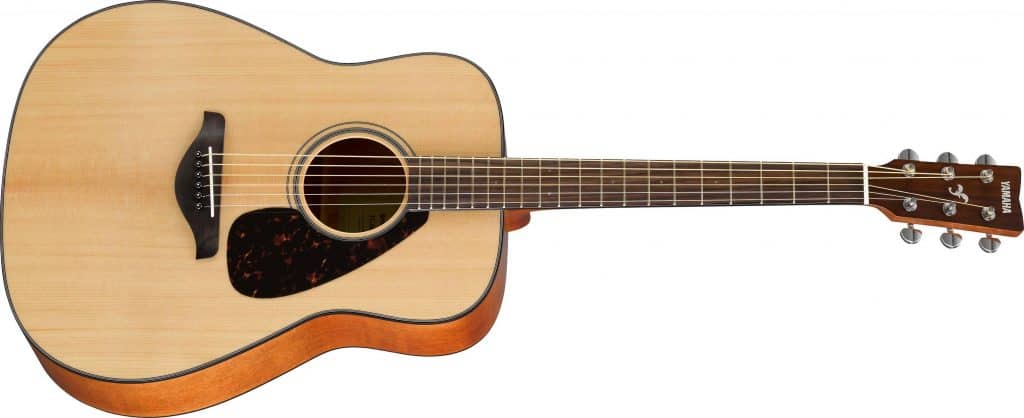
This Yamaha FG800 is an upgrade of the entry-level Yamaha FG700, and it’s one of the newest installations in the whole FG series of Yamaha acoustic guitars.
It sports a Dreadnought body type, and it boasts a bigger, solid top that’s well spruced up to provide you with the best playing performance.
One of the features unique to this Yamaha FG800 (Check Price SP) is its scalloped bracing, a feature that gives this acoustic guitar some of the best low-end and an even more powerful projection, exactly what you need for recordings and live performances.
As an upgrade from the FG700, this acoustic guitar boasts better stage projection, a punchier tone, and it’s super stylish thanks to the tapered neck and the gentle roundedness of the fingerboard edges.
As a result of its design and features, the Yamaha FG800 is an ideal acoustic guitar for pro and pretty much anyone who knows their way around guitars.
How do the features of these two guitars compare?
Besides the obvious – that the Fender CD-60S is suitable for beginners and the Yamaha FG800 ideal for professionals and experienced acoustic guitars, especially if you are looking for an affordable option, these two Dreadnought guitars have some differences in their features.
Body and Neck
If you are not keen on the features of these two guitars, you might assume that they are of the same size, but they aren’t. Both guitars have a Dreadnought body type, though.
The Yamaha FG800 boasts great aesthetic additions, including the abalone rosette, and it has that timeless and an uncluttered 25” scale length that makes up its non-cutaway dreadnought body.
It features a scalloped-braced top made of solid Sitka Spruce and laminated Nato at the back and on the sides.
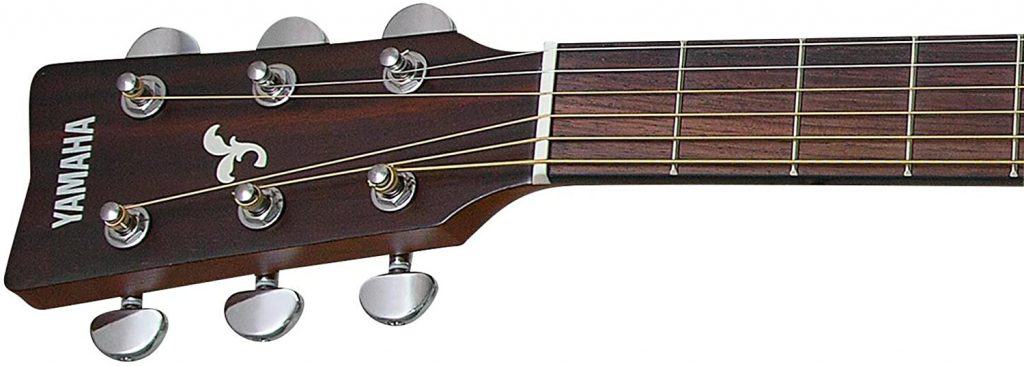
It generally has a pretty decent setup for its price. Like other Dreadnoughts, this Yamaha feels comfortable, and it’s well made, although it’s not great for people with smaller hands or beginners.
But for the price, its setup makes this a steal. Its finish features a glossy finish, a faux tortoiseshell pickguard, and a black and white multi-ply binding, all designed to add character to the guitar.
Its neck is joined at the 14th fret as is the Fender CD-60S, it’s made of Nato, has matching sides and back, and also sports a hand-friendly satin finish. It has a total of 20 frets and a rosewood fretboard.
Then you have the Fender CD-60S, which boasts a scale length of 25.3”, a simple Dreadnought body, and a nice, glossy (or natural) finish.
Its natural finish is designed to show off the wood grains, and like the Yamaha, it comes with solid spruce at the top paired with laminated mahogany on the sides and at the back, hence a classic and beautiful wood pairing that enhances its tone.
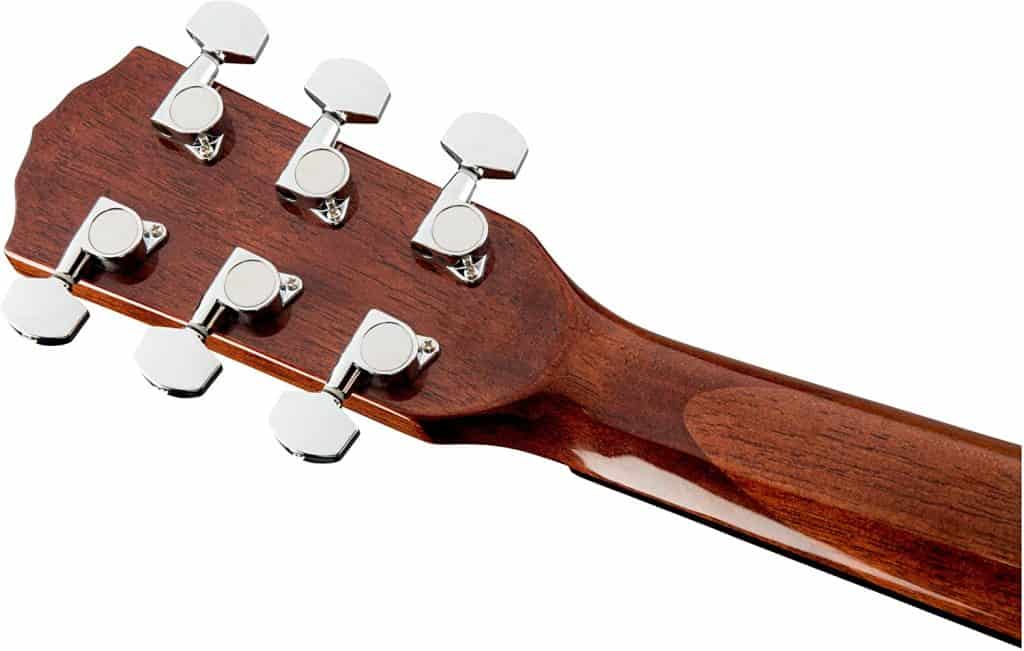
Thanks to the wood pairing for the body, this Fender boasts exceptional playability, comfortable rosewood fretboard that comes with the rolled edges, along with a friendly hand profile.
If you are wondering about the frets, its neck is joined on the 14th though there are 20 frets in total. So, while this Fender isn’t a premium model, it has a nice overall acoustic feel, even better than some pricier models on the market.
This Fender CD-60S, however, lacks a scalloped bracing, a feature that’s present in the Yamaha FG800 (Check Price SP).
Scalloped bracing is an important feature that makes the sound more sustainable by preserving the volume and the tonal qualities of the guitar when sound is delivered throughout the air, hence a great performance at a larger room/ space.
Sound
The pairing of mahogany and spruce in this Fender allows you to enjoy a very versatile, well-balanced, and lively tones with a nice warmth and brightness.
With the Dreadnought body, the sound projection of this guitar is robust and strong. The use of solid wood ensures more opening up, volume, and warmth as you play with the guitar.
The Yamaha also boasts excellent sound as it is quite resonant and loud thanks to the scalloped bracing and the Dreadnought body type.
It also offers warm and sweet sounds with a nice balance of brightness. The sound qualities of this Yamaha guitar is one of the best you will find in budget acoustic guitars.
Hardware
The other feature that differentiates these guitars is their hardware. The Fender CD-60S comes with no electronics, as expected from a beginner guitar, because plugging is unnecessary.
However, it comes with die-cast tuners made of chrome, a high-quality rosewood bridge, and Dura-tone coated springs, all of which ensure the exceptional performance of the guitar.
Some of the accessories that may be included with the guitar include a hard-shell case, plectrums, and a digital tuner.
The hardware features of the Yamaha FG800 also boast great performance, consistency, and reliability, as it comes with a headstock fitted with sealed die-cast high-quality chrome tuners, a urea nut& saddle, as well as the standard rosewood bridge that’s placed at the bottom.
Conclusion
Overall, these two are great acoustic guitars with Dreadnought bodies. They are affordable and easy to use.
However, while they promise exceptional performances, the Fender CD-60S is ideal for beginners and not for use in live performances while the Yamaha FG800 is ideal for a pro or even a performer, even though fast-learners might also appreciate the power of the FG800 by Yamaha.
The Yamaha FG800 also has the upper hand because of the scalloped bracing and the fact that it’s a performance acoustic piece.
No products found.
Disclaimer
Instrumental Global is a participant in the Amazon Services LLC Associates Program; an affiliate advertising program designed to provide a means for sites to earn advertising fees by advertising and linking to Amazon.com.
Bear in mind that some of the links in this post are affiliate links and if you go through them to make a purchase I will earn a commission.
Keep in mind that I link these companies and their products because of their quality and not because of the commission I receive from your purchases. The decision is yours, and whether or not you decide to buy something is completely up to you.

